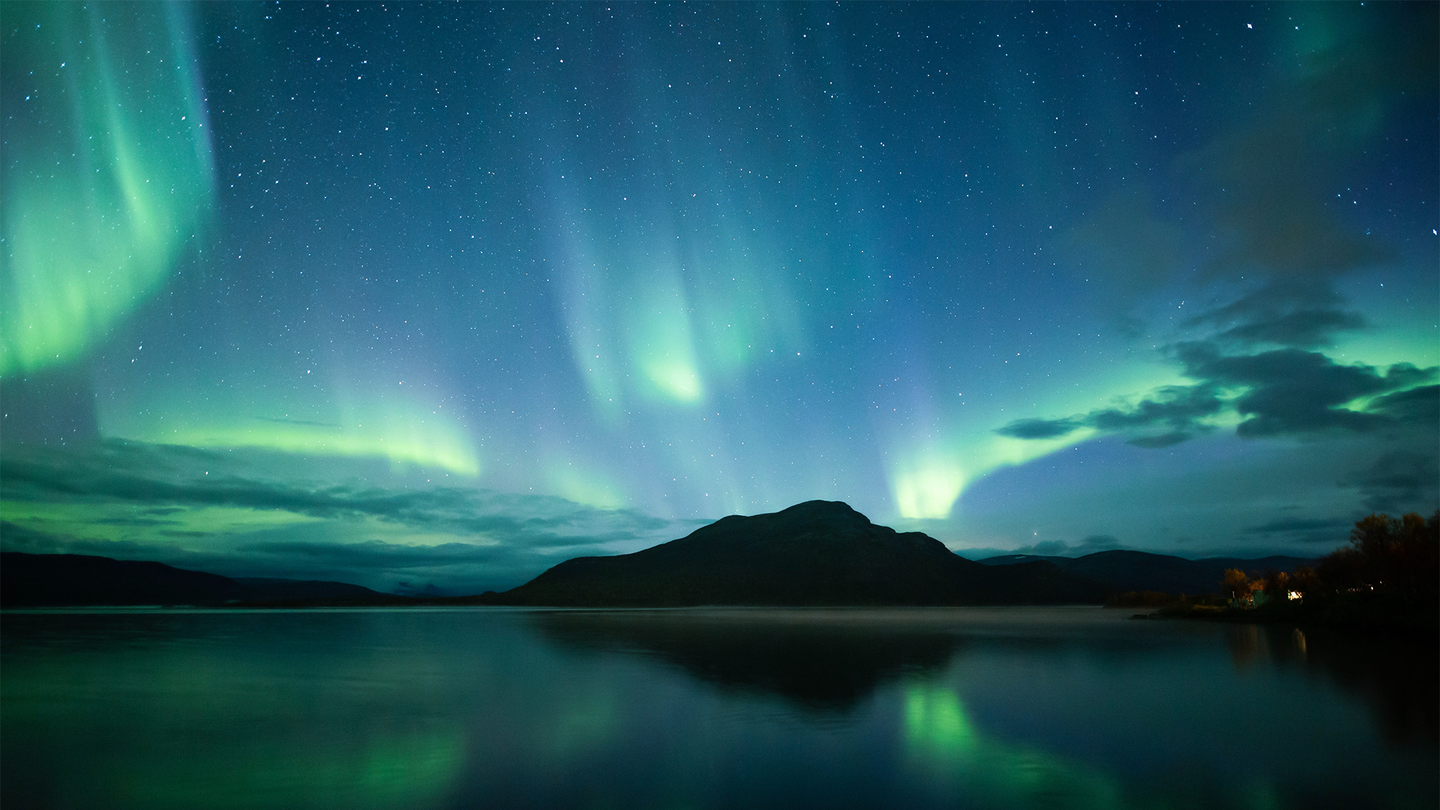
Residents of 17 states could catch a glimpse of the elusive aurora borealis, also known as the northern lights, this Thursday. The predicted rainbow of colors that light up the night sky when solar wind hits the atmosphere is part of a solar cycle that is expected to peak in 2024, and is making the northern lights visible in points further south.
[Related: We finally know what sparks the Northern Lights.]
The Geophysical Institute at the University of Alaska at Fairbanks has forecast auroral activity on July 12 and 13 parts of in Alaska, Oregon, Washington, Idaho, Montana, Wyoming, North Dakota, South Dakota, Minnesota, Wisconsin, Michigan, New York, New Hampshire, Vermont, Indiana, Maine, and Maryland.
The Kp index, or planetary index, ranks auroral activity on a scale from zero up to nine—zero being not very active and nine being bright and active. Thursday’s storm has a forecast for Kp6, according to the Geophysical Institute.
The forecast predicts that on Wednesday, the storm will be highly visible “low on the horizon from Seattle, Des Moines [Iowa], Chicago, Cleveland, Boston, and Halifax [Nova Scotia].”
On Thursday, it will get stronger and may be seen overhead in cities including Minneapolis, Milwaukee, Bay City, Michigan. The lights will be visible on the horizon in Salem, Boise, Cheyenne, Lincoln, Indianapolis, and Annapolis.
The northern lights occur when the sun’s continuous solar wind and solar storms, specifically those called coronal mass ejections, interact with Earth’s magnetic field. The light show happens very frequently in northern locales like Canada, Alaska, and Scandinavia. Huge bursts of plasma are ejected via this wind, spraying electrons into the magnetic field. These super charged particles then combine with the field and shoot into Earth’s atmosphere, following the path of the magnetic field towards the Earth’s poles. When these particles collide with molecules in the atmosphere, they produce the dazzling colored lights in our sky.
UCLA space science professor Robert McPherron told PopSci in September 2022 that this process is similar to switching off old television sets. “When you turn them on, if you had good hearing, you’d hear a very high pitched whine indicative of a very high frequency” caused by a beam of electrons. And if you turned it off, you’d see a spot right in the center of the screen.”
That glowing spot on the fluorescent screen occurs when a beam of electrons hits it from the inside. “And that’s exactly what the aurora is,” McPherron said. “It is electrons coming down along a magnetic field line, and the screen is the atmosphere.”
[Related: Hold onto your satellites: The sun is about to get a lot stormier.]
The greens, blues, and reds that result come from the electrons as well. As they enter the Earth’s atmosphere, the electrons excite gasses, particularly oxygen and nitrogen. Once the molecules within the oxygen and nitrogen are charged with this energy beyond their normal state, they emit photons as they return back to their baseline levels. Oxygen emits greens and reds, while nitrogen glows blue.
In April, the northern lights were visible as far south as Arizona during a huge surge of solar activity. This next storm is the third severe geomagnetic storm since this current solar cycle began in 2019.
According to the National Oceanic and Atmospheric Administration’s Space Weather Prediction Center, those hoping to catch a glimpse of the aurora should head away from city lights and that the best viewing times are between 10 PM and 2 AM local time.
The post 17 US states will see the northern lights this week, thanks to solar storms appeared first on Popular Science.
Articles may contain affiliate links which enable us to share in the revenue of any purchases made.
from | Popular Science https://ift.tt/rk4QfoR



0 Comments